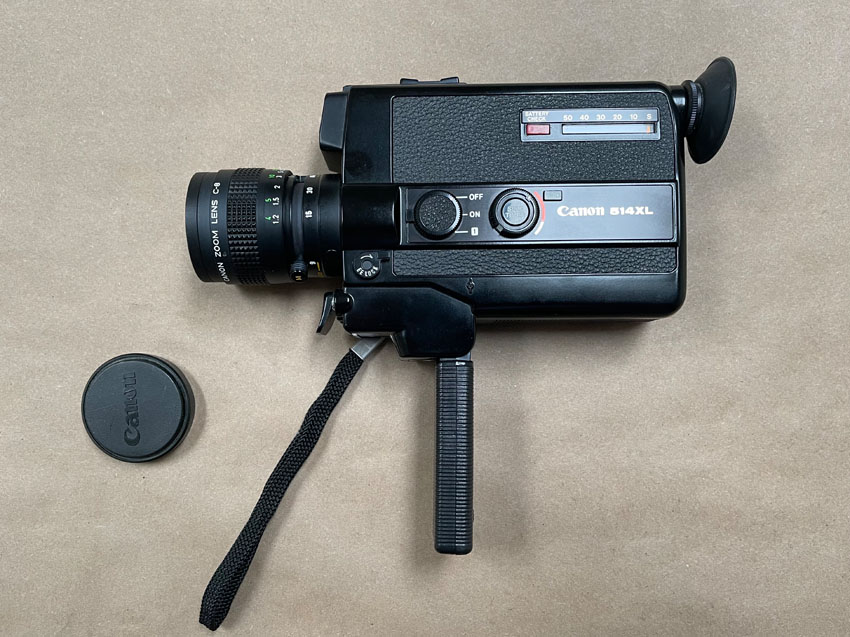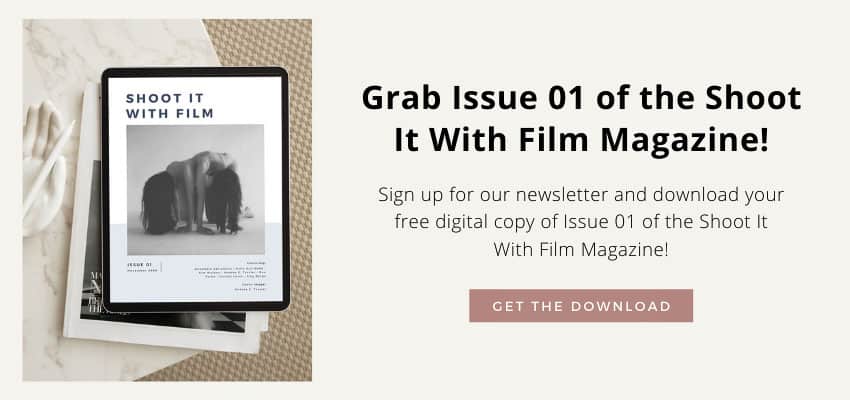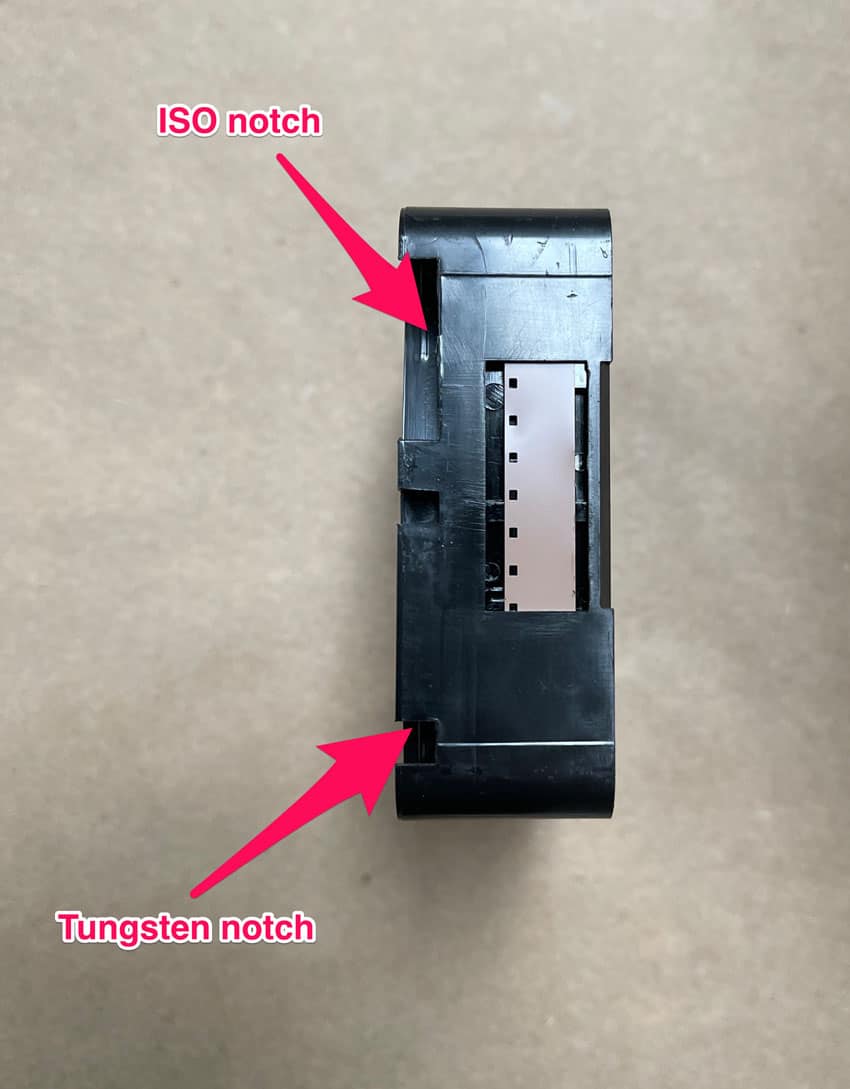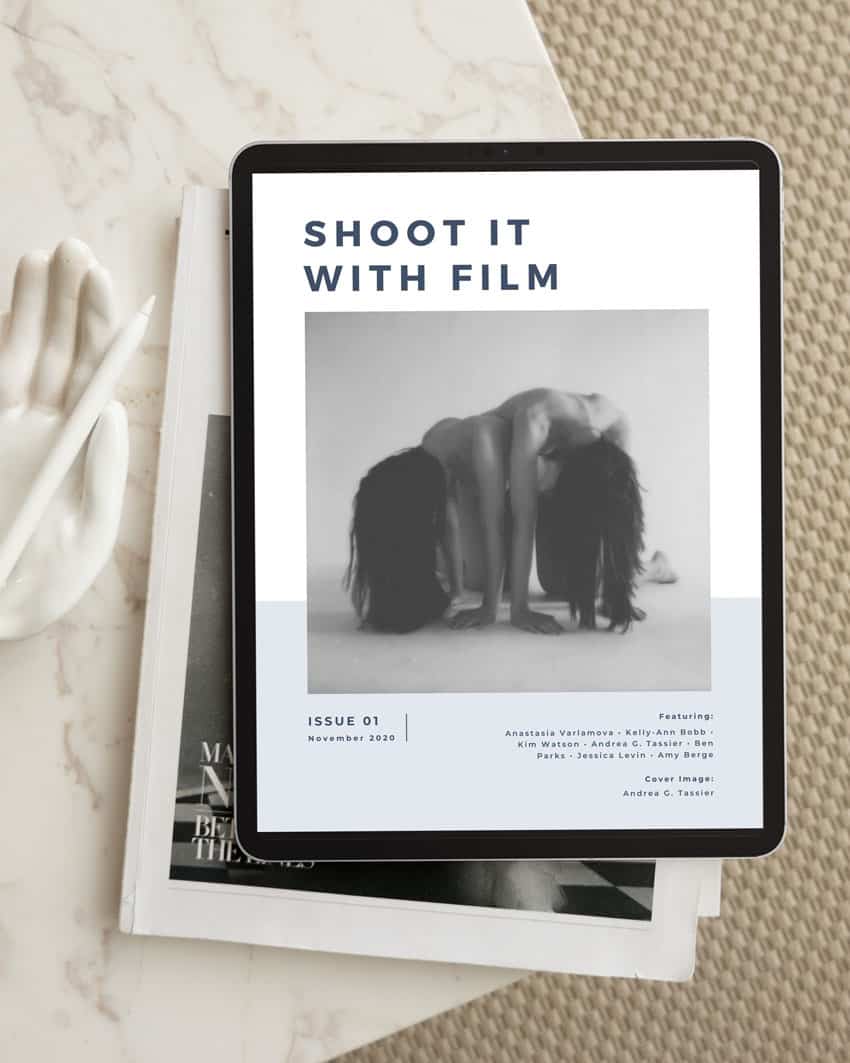
Written by Jen Golay
I have never been interested in video or moviemaking. That is until I discovered Super 8!
I didn’t grow up with Super 8 films or even video home movies, so the whole idea of making a movie was foreign to me. But once I discovered Super 8, I had to try it.
I think I was attracted to the way the movies shot on Super 8 always felt dreamy and looked vintage. I also liked the idea that it was actual film and not video tape. It could be projected like a real movie!
Before I could even think about how to go about making Super 8 movies, I needed to find a Super 8 camera.
That itself seemed pretty daunting, but it turned out to be not so tough. This is my guide to help you pick out and buy your first Super 8 camera.



How Much Does a Super 8 Camera Cost?
In recent years, Super 8 cameras have been relatively easy to find and quite inexpensive. However, in the last four years since I bought my first Super 8 camera, they have increased in price.
You can find Super 8 cameras anywhere from your grandma’s attic and thrift stores to eBay, and they can range in price from free to $50 all the way up to $500 and above. (Take a look at them on eBay.)
I paid about $120 for my Canon 514XL about four years ago. Now, I see them on eBay for upwards of $200.

How to Test a Super 8 Camera to See If It’s Working
When you’re shopping for a Super 8 camera, the first thing you need to find out is if the camera you’re looking at works.
Does the motor run?
The fastest way to find out is to test it. Most Super 8 movie cameras run on AA batteries, so if you pop in a couple of batteries and turn the camera on, you can find out if it works.

How will you know if it works?
When you pull the shooting trigger, you’ll hear the ticking sound of the film gate. To verify that it is working correctly, open the side of the camera where the film cartridge goes and check to see if the take-up reel is turning and check to see if the shutter is flickering.
If both are moving, you have a working camera!
If you can’t test the camera yourself because you are purchasing it online, ask the seller to test it for you if he/she hasn’t already.

Related: Getting Started With Super 8 Film
What Film ISO Can the Camera Use?
While you have the film door open look next to the film gate to see how many pins are there or if there is a slider.
When you look at a Super 8 cartridge, you’ll see notches along the side. These notches tell you camera what speed and type of film is loaded into your camera.
If you have an automatic camera, this is especially important to know.
Many of the older automatic cameras were designed for slower films such as ISO 50-200. The more pins your camera has, the more film options are available to you.
If you have a camera with manual exposure options, you may be able to dial in your ISO rather than rely on the cartridge notches.
Here is a Super 8 Notch Ruler to help you figure out what your camera can handle.


Checking the Exposure System
Next check what kind of exposure system your camera has.
Most of the most readily available cameras are automatic, so you don’t need to have an extensive knowledge of metering and exposure in filmmaking to use them.
If you think you might want to delve deeper into filmmaking and have more control over your exposure, look for a camera with manual and auto options, like the Canon 814 (find on eBay).
Understanding the Features on Your Super 8 Camera
Finally, look at the other features available on your camera.
Here are some of the features usually found on Super 8 cameras. If these features are important to you, you’ll want to make sure they are included on the camera you’re looking to buy.

No. 85 Orange Filter
This filter is built into the camera and is not one you’ll need to screw onto the outside lens. The purpose of this lens is to color correct when you’re shooting tungsten balanced film outside in regular daylight.
There is usually a button or slider on the outside of the camera with a lightbulb and a sunshine.
When you push the button or the slider, if you look carefully at the lens, you should be able to see a filter flip down inside the lens. You won’t see any change through the viewfinder.
Often tungsten film cartridges have another notch in the side that will automatically activate this filter.
FPS: Frames Per Second
The standard shooting speed for Super 8 is 18 fps, but your camera may have other options like 12, 24, or 32.
Some cameras can even do slow motion.

Self-Timer
This feature allows you to get in the film by putting your camera on a tripod and setting the self-timer.
Be sure to check your manual (which you can look up online) for exactly how this feature works on your camera.
A Cable Release Socket
This feature allows you to make single frame exposures for stop motion animation.
Run/Lock Motor Control
This locks the shutter trigger to prevent accidental filming, or it leaves the film running so that you don’t have to always have your finger on the shutter trigger.

Film Counter
This keeps track of how much film has been shot and how much film is still available. Most Super 8 cartridges have about 2.5 to 3 minutes of film.
Note that if you remove your film cartridge before it’s finished (which you can do while only losing a few frames and give you a cool light leak type of transition) your film counter may reset.
Film counters usually go by footage, not minutes.

Battery check
Some cameras have a battery check button to let you know how much power you have available.
Zoom
Most affordable Super 8 cameras do not have interchangeable lenses, so they are equipped with zoom lenses. Check to see what your camera’s zoom, capabilities are.
They usually have a zoom lever attached to the lens of the camera for fast zooming as well as a power zoom switch for steady zooming.

Macro Switch
Some cameras have moderate macro capabilities that can be utilized with a switch on the camera.
Exposure Lock or Backlight Button
This allows you to lock your exposure when shooting against the light.
A Little About Canon Super 8 Cameras
I have three different Super 8 Camera models and they are all Canon: the Canon 310XL (find on eBay), the Canon 514XL (find on eBay), and the Canon Auto Zoom 814 (find on eBay).
One has manual and auto capabilities, and two are only automatic. I like to use the automatic ones the most often.
Canon cameras tell you a lot about themselves just in their name. For example, the letters and numbers of the Canon 310XL Super 8 camera tell you that it has a 3X zoom and a fast f/1.0 lens. The XL system enables filming in dim light and stands for “existing light”, while the Canon 514XL has a 5X zoom and a fast f/1.4 lens.
Both the Canon 310XL and Canon 514XL cameras are fully automatic.
My Canon Auto Zoom 814 has an 8X zoom with an f/1.4 lens. It’s an older heavier model with a metal body while the XL cameras a smaller and lighter with plastic bodies.
The 814 has more manual features like three different fps rates, manual exposure as well as auto exposure.
Where to Buy a Super 8 Camera
If you want a camera that has been cleaned and refurbished and guaranteed to work, you can choose from the ones available from Pro 8mm.
They are significantly more expensive than what you can find on your own, but they have been completely overhauled and improved upon.
Pro 8mm sells film and processing, as well, and you can also find the Pro 8mm film on Amazon.
If you’re looking for better prices, eBay has plenty of Super 8 options. But you’ll have to do a bit more due diligence to make sure the camera is working.
Craigslist and thrift stores are other great places to find Super 8 cameras at a good price, and you may be able to test the camera before you purchase.
Final Thoughts
There are many Super 8 camera options out there, and for a comprehensive list, take a look at filmkorn.org.
No matter which camera you choose, it’s worth looking up a scanned PDF copy of its manual. Many are available for free online.
These cameras aren’t complicated, so the manuals are a quick read. It’s worth knowing what features your camera has and what it can do.
Once you’ve got your camera, pop in some film and begin your Super 8 adventure!
Thank you so much, Jen! Jen is a regular contributor here at Shoot It With Film, and you can check out her other articles here, including How to Shoot Snow on Film and a review of the Rolleiflex 2.8F. You can also check out more of Jen’s work on Instagram.
If you have questions about buying a Super 8 camera, leave them below in the comments! And you can pick up a Super 8 camera for yourself on eBay.








Blog Comments
Michael S. Goldfarb
May 16, 2021 at 10:42 am
First, let me say for the record that I’m an old guy and I still shoot and develop 35mm b/w film. Classic cameras and traditional film offer pleasures and images that are wonderfully different from digital imaging. And I’m just thrilled that so many young people are now finding their way to traditional photography!
Okay… so I made Super 8 films (and a couple of 16mm films) back in the seventies… because that’s the only amateur filmmaking medium there was back then, apart from expensive, primitive open-reel videotape systems like Sony Portapacks. (I used those too, in high school.) It was fun, and I have some still-impressive films that I occasionally show now.
But I honestly don’t see why you’d want to shoot Super 8 film in 2021. It was only a marginally acceptable low-fi medium back then, and that was before the cameras were antiques and the film and processing were INSANELY expensive specialty items. Even if you’re using that legendary Beaulieu camera (which I lusted over back then!), the resulting movies are still going to be soft and mushy, with grain like cannonballs.
So if you have the funds and you decide that you simply MUST have the experience of shooting Super 8 film, okay, enjoy. It was pretty hip in its time, and many of the cameras and projectors were and remain fascinating mechanical equipment.
But the results are limited and likely to be unsatisfying… Unless you’re specifically making footage for fake sixties home movies or early music videos to use within a larger project.
Speaking as somebody who’s used nearly every photography/filmmaking system that’s been available since the early sixties, Super 8 was very cool… but honestly, just never all that great a filmmaking medium. Your chances of ultimately being disappointed in the Super 8 experience are not trivial.
Michael S. Goldfarb
May 17, 2021 at 7:22 am
Okay, looking at my comments a day later, they seem a bit harsh.
For starters, I didn’t praise Jen for writing a really useful and detailed article. Sorry. My comments were directed against the Super 8 format, not your work, nor your enthusiasm for last century’s tech!
But you must understand, I used Super 8 back when it was mainstream, and a 50-foot film cartridge with processing cost under $10.
And frankly, that seemed like a lot for just three and half minutes of footage then… especially if you are serious about picture and magnetic sound quality, because then you shot at 24fps, not 18, and it’s only two and half minutes.
Spending $80 for only two or three minutes of not-great silent film footage just seems crazy. Especially when a low-end smartphone will shoot endless, vastly more detailed video with sound.
But re my comments about image quality… They are from an era when we always projected Super 8 film, it was the only way to show it. And it was a huge magnification even to get to a 4×6-foot image. These days, if your ultimate display is going to be on a monitor, tablet, or phone, it’s not a big enough enlargement to look so bad.
Anyway, I don’t want to discourage enthusiasts from trying Super 8 if it’s your idea of a good time. Just be aware of how limited a motion picture format it is, especially with its current film/processing expense and given the age of the cameras, most of which weren’t built anywhere near as tough as contemporaneous 35mm cameras.
Sean s Chang
January 26, 2022 at 8:01 am
Is the camera still good if the auto exposure system is not working and there is no way of setting manual exposure? Thanks.
Jen Golay
January 26, 2022 at 9:46 pm
Hi Sean! If the autoexposure on your camera is not working or is not accurate, and you have no manual exposure options, I would not recommend using the camera.
Ricardo Nejo
November 21, 2022 at 9:49 pm
Onde posso conseguir um external power para a minha canon 814 xls
Aa baterias vazaram e agira éaos fácil comorar um carga externa.
Muito obrigado a quem retornar
TIm
June 28, 2023 at 2:35 pm
Jen, great article! Curious about any other differences between the Canon 310xl compared to the 514xl. Are they about the same physical size/weight or is the 514xl bigger?
Jen Golay
June 28, 2023 at 6:36 pm
Hi Tim! Thanks for you comment! Yes, they are almost the exact same size and weight. Any difference is negligible.
Mr. Beach
October 15, 2023 at 4:32 pm
Hey there! Quick question…if you open up the cartridge of your 8mm film before it’s done to check it, I know that it goes back to 0 and resets. However, can you continue shooting with it? Do I just shoot with it again until it gets to the end? Or will it go over the previous shots? Thank you for the help!
Jen Golay
October 16, 2023 at 1:16 pm
Hi Mr. Beach!
Yes, you can re-insert your cartridge and continue shooting. You’ll have a small light leak transition, but the camera cannot rewind the cartridge, so you won’t double expose your already exposed film. You’ll just have to be mindful of when your film runs out. You won’t be able to rely on the camera to tell you.